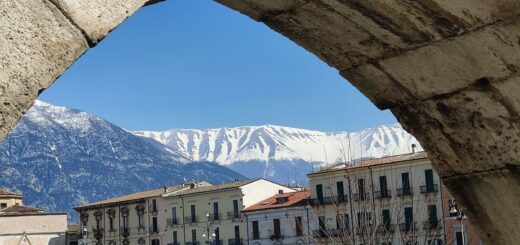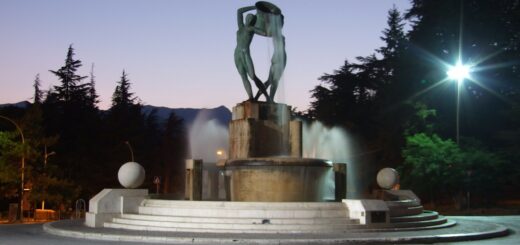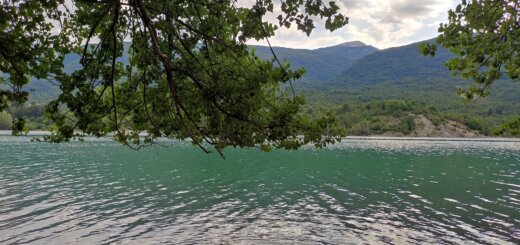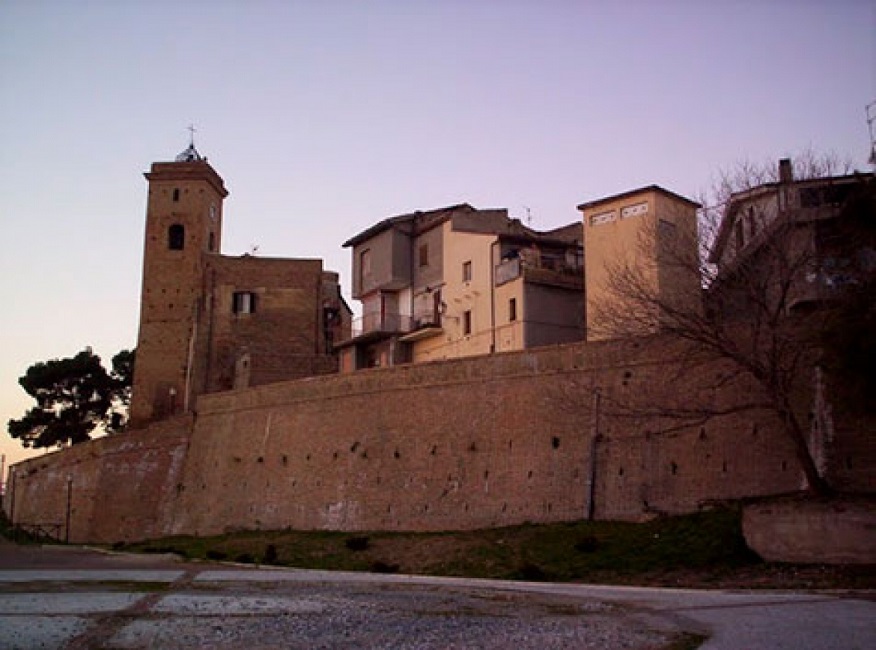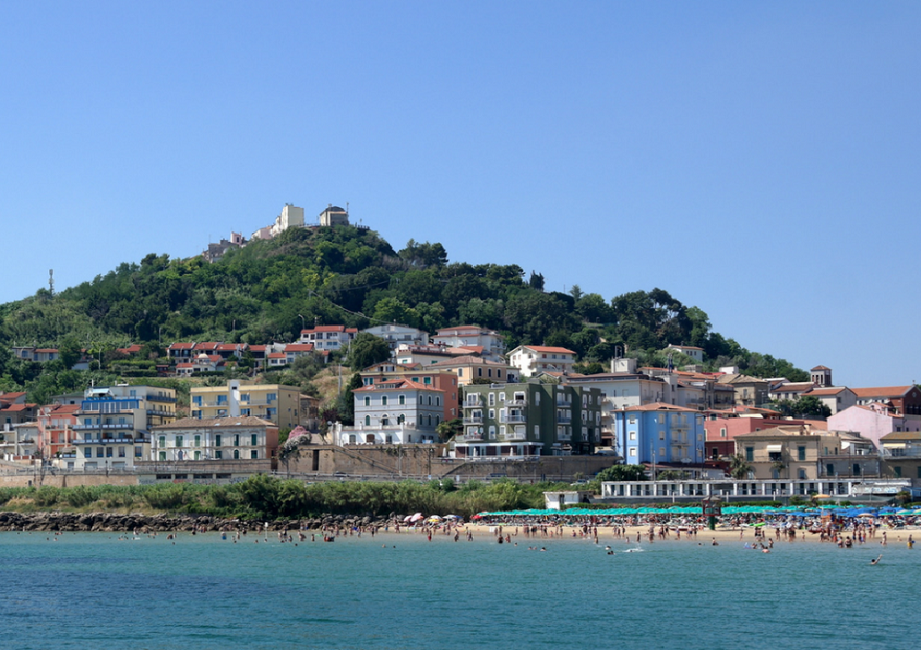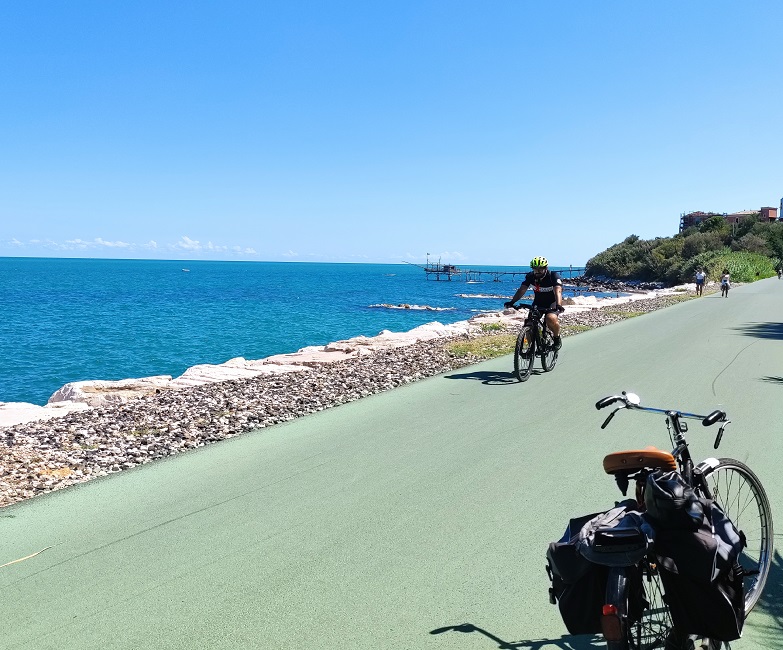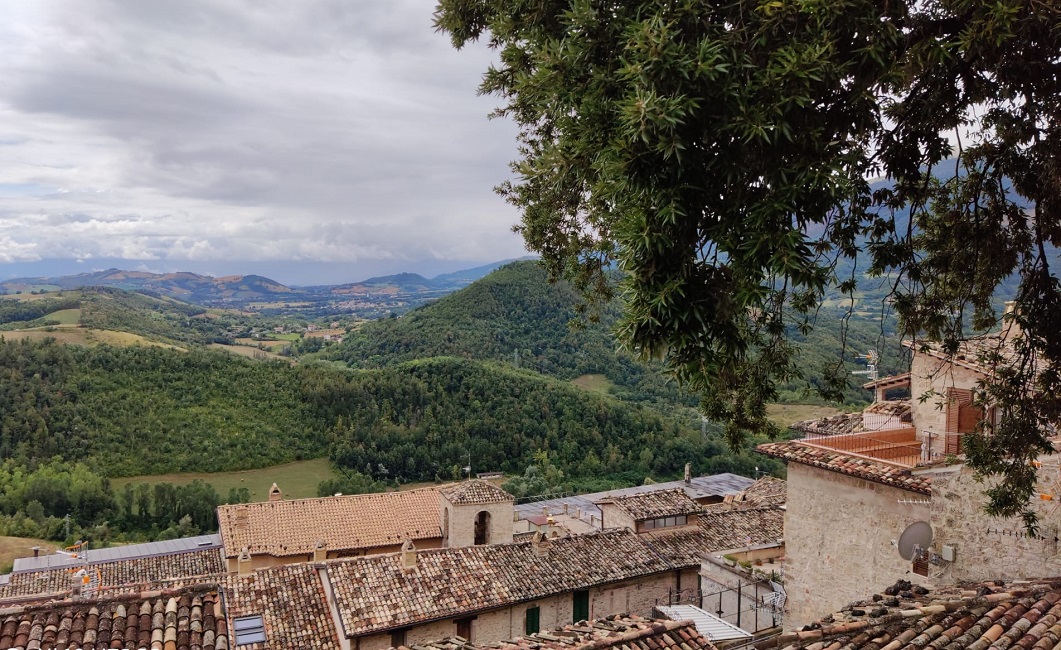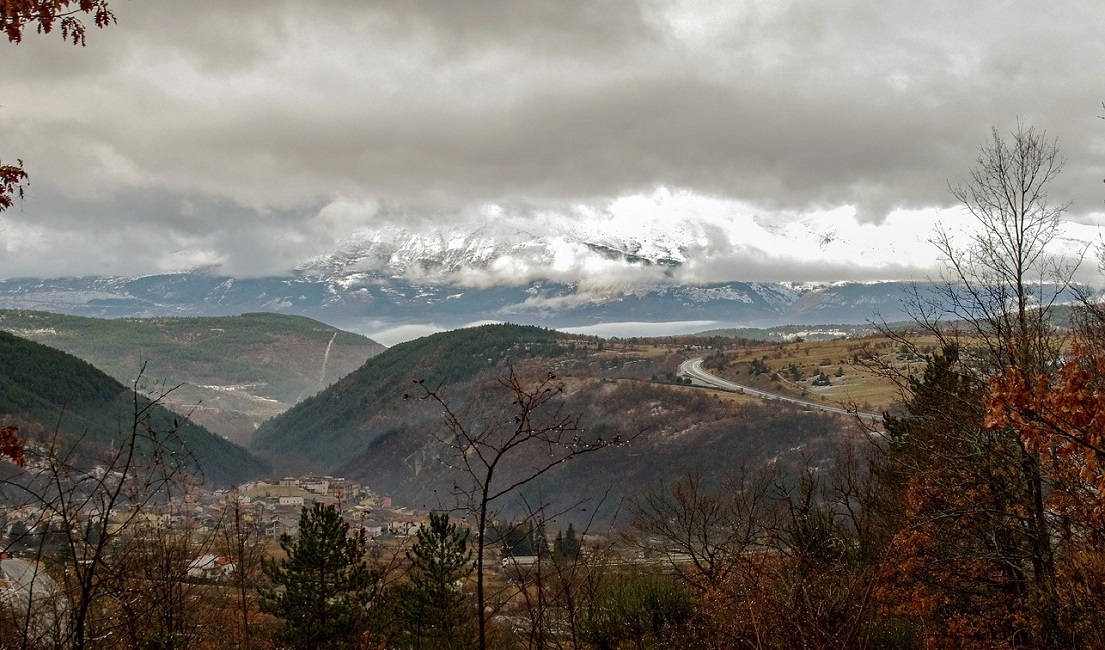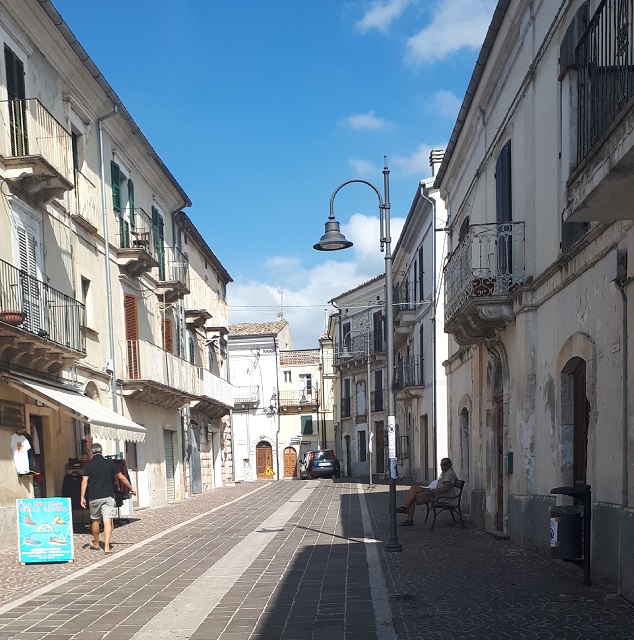Pescasseroli
As temperatures near the coast continue to soar we take to the hills.
More precisely, we head for the Parco Nazionale di Abruzzo, Lazio and Molise and we have chosen Pescasseroli as our base.
As we drive into town it’s as if we’ve changed countries. The air has a zing to it. The grass is a healthy green, in contrast to the sun-bleached variety we have left behind, and the trees nod in the breeze. Houses have sloping roofs and wooden window boxes from which tumble cascades of scarlet geraniums. Signs point us to the ski slopes.

Pescasseroli is, in fact, best known as a winter resort. But it is also a summer retreat for walkers, nature lovers and mostly, it seems as I look around me, for people of a certain age. Set against a backdrop of low wooded hills, it has the sedate charm of a spa town, with its generous squares, quaint shops, tearooms and grand hotels. There are flowers everywhere.
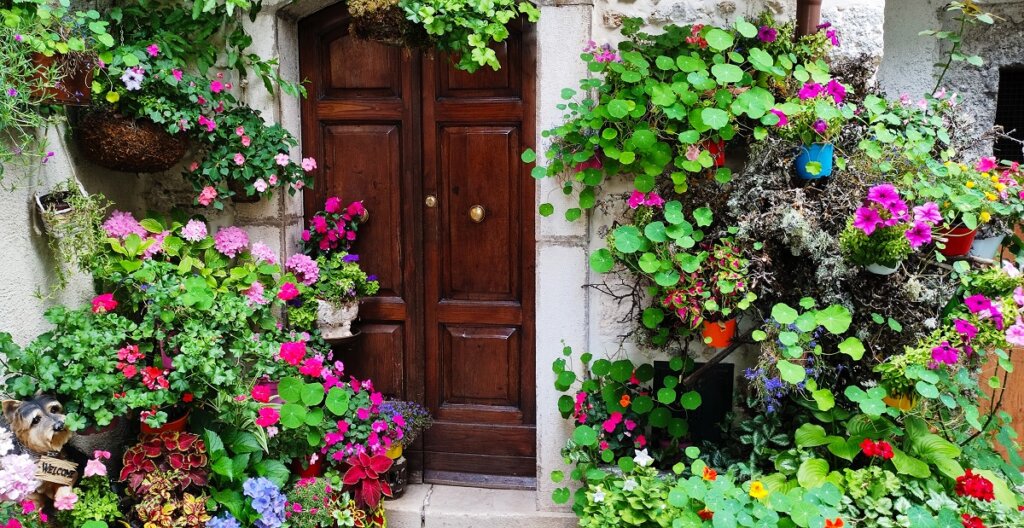
Pescasseroli Legge
Perhaps surprisingly, though, the town is also a favourite haunt of the Italian literati. The summer festival, Pescasseroli Legge, initiated and presided over by the Tuscan novelist and feminist Dacia Mariaini, who has a home here, is about to start. There are poster everywhere announcing the programme of readings and events, culminating in awards for fiction, essays and journalism.
A Legend
Pesca means peach, but the name Pescasseroli has little to do with fruit and probably more to do with the word peschio meaning ‘town built on a rocky peak’. However, I learned a more romantic story behind the name. According to legend, a young man called Serolo fell in love with a beautiful young girl called Pesca. While looking for him one day, she wandered up to the Castel Mancino, whose ruins we see just above the town. Here, our lovely Peach was killed by the owner, Serolo’s cruel father. Serolo died of a broken heart and it was over his grave that the town was built.
Palazzo Sipari
Since we are here to visit the Parco Nazionale it seems fitting to visit the home of its architect, Erminio Sipari. We book ourselves on a guided tour of this grand residence.
On our way we visit the church of Madonna del Carmelo. Dating back to the 1700s, the church has been damaged several times by earthquakes and has remained closed for long periods throughout its history. The style is Rococo and worth a look.
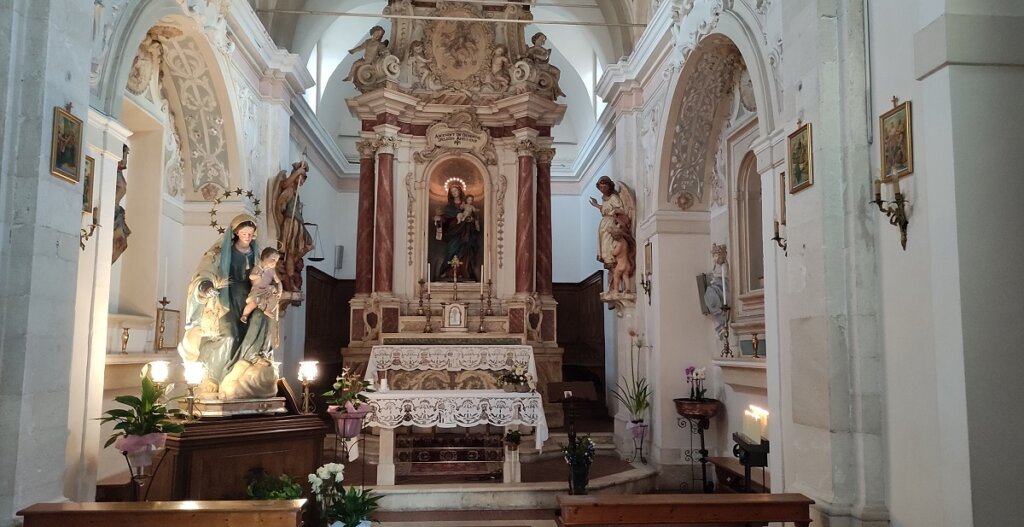
At Palazzo Sipari, an imposing building with an unfussy facade, we meet our guide and our fellow tourists in the ground floor courtyard. As we troop upstairs, the young guide explains that the house, built in 1839, was inhabited by a member of the Sipari family until 2006. The last resident was Maria Cristina, Erminio’s daughter, according to whose wish it was transformed into a house-museum.
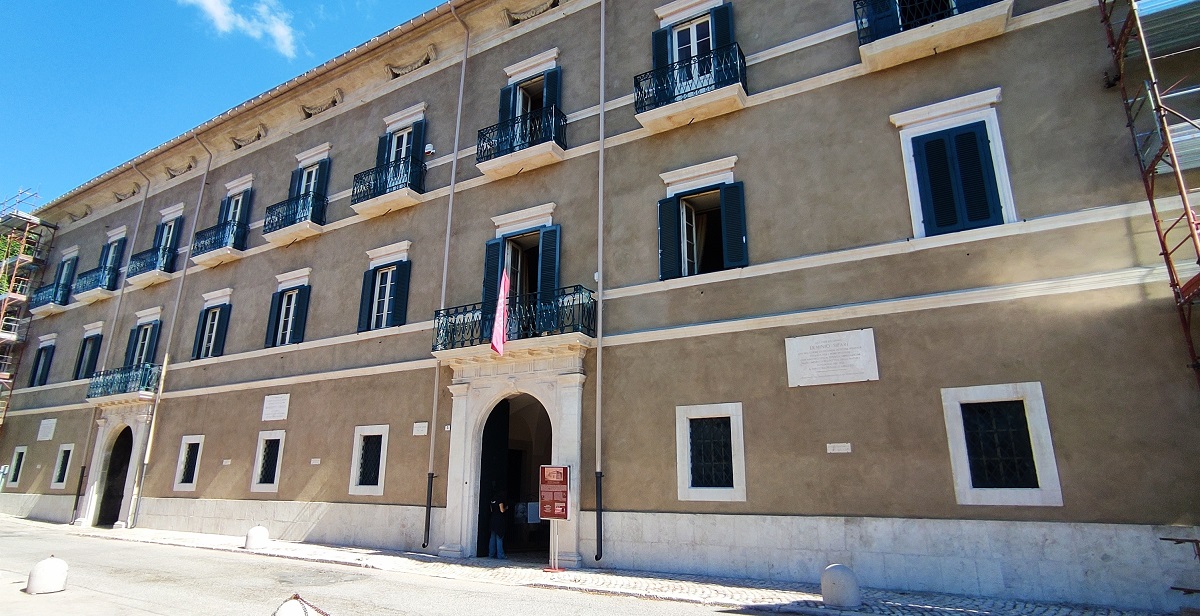
I love it. I love the high ceilings and the chandeliers, the airy rooms and the sunlit halls, the standard lamps with their ballooning shades, and the tables set for tea. I love the fireplaces and the imposing mantelpieces, the immense kitchen range and the scrubbed and gleaming copper pots. I gaze, charmed, at the book left open, a pair of pince-nez resting casually across its pages.
I feel as if I could be happy living there now, with the furniture just the way it is. My only reserve would be the beds. They are narrow and lumpy with fusty-looking covers and would definitely need to be replaced. Somehow, though, Ikea doesn’t seem like a valid alternative.
The guide has asked us not to touch anything and we are all careful to comply – all except the youngest member of our group, a boy of about six who apparently intends to park his behind on every priceless antique chair in the place. His father glares at the mother and the mother glares at the child with no effect.
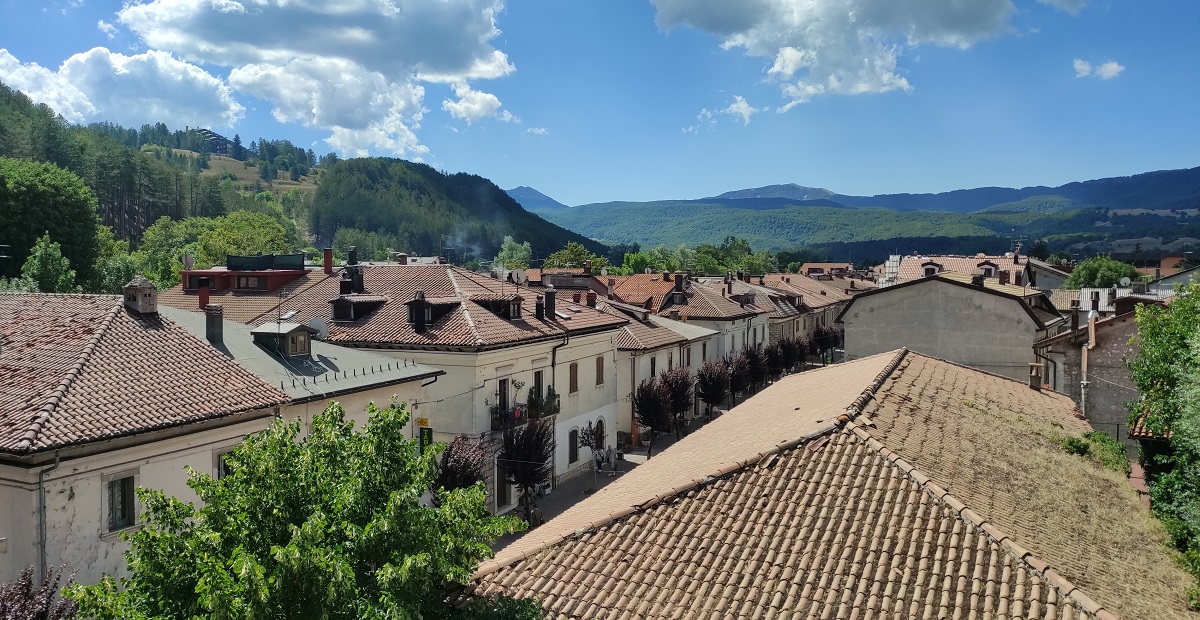
Benedetto Croce
The guide leads us to the birthing room, with its bed, basins and tubs and, of course, the cradle. This was where Benedetto Croce was born in 1866. Philosopher, historian, politician and anti-fascist, he was one of Italy’s great twentieth-century influencers.
But why was he born here, in this palazzo? The young guide explains that his mother was related to the Sipari family and came here from Naples to have her baby because in their hometown, at the time, there was a cholera epidemic. Benedetto Croce and Erminio Sipari were cousins.
Having escaped cholera, his mother died in an earthquake, along with his father and sister, when Benedetto was 17. He was extracted, barely alive, from the rubble.
The Parco Nazionale d’Abruzzo
The knots and tangles of the Sipari family, instead, are enough to make your head spin but the guide delivers a potted version, while simultaneously distracting Dennis the Menace from his next assault on the furniture. My admiration knows no bounds.
We take leave of our lovely guide, and as we emerge into the sunshine, I reflect on Erminio Sipari and how he was a man of vision, ahead of his time. An early believer in sustainable development, he cherished the idea of a national park and inaugurated the Parco Nazionale d’Abruzzo in 1922 in the former royal hunting reserve. The park was the first of its kind in Italy and one of the first in Europe.
Sipari defined the park as a ‘place for national education, designed to arouse respect for the beauty, the grandeur and importance of works of nature.’
We are about to reap the benefits of Sipari’s vision for our next stop is La Camosciara, the heart of this stupendous park.
Travel Notes
Palazzo Sipari is at Piazza Benedetto Croce 5, Pescasseroli
Pescasseroli is equidistant from Rome, Naples and Pescara.
From Rome: A24/A25 Roma-Avezzano-Pescara, Exit Pescina, then SS83 to Pescasseroli. In summer and Christmas season also by bus, Roma-Pescasseroli
From Naples: Exit A1 at Cassino. Then SR509 to Opi and SS83 to Pescasseroli.
From Pescara: A25 to Pescina, then SS83 to Pescasseroli.


